Tennessee's 3rd congressional district
| Tennessee's 3rd congressional district | |
|---|---|
|
Tennessee's 3rd congressional district - since January 3, 2013. | |
| Current Representative | Chuck Fleischmann (R–Chattanooga) |
| Population (2017 (estimate)) | 726,420 |
| Median income | 35,434 |
| Ethnicity |
|
| Cook PVI | R+18[1] |
The 3rd Congressional District of Tennessee is a congressional district in East Tennessee. It has been represented by Republican Chuck Fleischmann since January 2011.
Current Boundaries
The district comprises two halves, joined together through a narrow tendril in Roane County near Ten Mile.
The upper half borders Kentucky to the north and is composed of Scott, Morgan, Roane, Anderson, and Union counties, as well as most of Campbell County.
The lower half borders North Carolina to the east and Georgia to the south. It is composed of Hamilton, Polk, McMinn, and Monroe, and the southern half of Bradley County.
Characteristics
Traditionally, the third district has centered on Chattanooga, which has been part of the district since before the Civil War.[2]
In area, the district is sparsely populated. Almost half of the district's population lives in Hamilton County, home to Chattanooga.
The region is very mountainous, due to its location in the Appalachian Mountains. It contains many "natural wonders" such as: The Lost Sea, Frozen Head, Ocoee Whitewater Center, and perhaps most famously, Lookout Mountain, which contains both Ruby Falls and Rock City from the "See Rock City" signs dotted across the South.
History
The 3rd District is on the dividing line between counties and towns that favored or opposed Southern secession in the Civil War. George Washington Bridges was elected as a Unionist (the name used by a coalition of Republicans, northern Democrats and anti-Confederate Southern Democrats) to the Thirty-seventh Congress, but he was arrested by Confederate troops while en route to Washington, D.C. and taken back to Tennessee. Bridges was held prisoner for more than a year before he escaped and went to Washington, D.C., and assumed his duties on February 23, 1863; serving until March 3, 1863.
During much of the 20th century, southeastern Tennessee was the only portion of heavily Republican East Tennessee where Democrats were able to compete on a more-or-less even basis. The Chattanooga papers—the moderate-to-progressive Times and the archconservative Free Press (now consolidated into the Chattanooga Times Free Press)--printed diametrically-opposed political editorials. The northern counties have predominantly voted Republican since the 1860s, in a manner similar to their neighbors in the present 1st and 2nd districts. However, Democrats have received some support in coal mining areas (dating from the Great Depression). Also, in the years since World War II, the government-founded city of Oak Ridge, with its active labor unions and a population largely derived from outside the region, has been a source of potential Democratic votes.
This balance showed signs of changing beginning in the late 1950s, when rural and working-class whites began splitting their tickets in national elections to support Dwight Eisenhower, Barry Goldwater, Governors Winfield Dunn and Lamar Alexander, Ronald Reagan, and two Chattanoogans, U.S. Representative LaMar Baker and Senator Bill Brock. It also warmly supported George Wallace in his third-party run for president in 1968. The district has only supported a Democrat for president twice in the last half century, in 1956 and 1992. Even in those cases, that support was almost entirely attributable to the presence of native sons as vice presidential candidates. In 1956, Senator Estes Kefauver, who had represented the 3rd from 1939 to 1949, was the Democratic vice presidential candidate. In 1992, Senator Al Gore was Bill Clinton's running mate, but even with Gore's presence, the Democrats only carried the 3rd by 39 votes out of 225,000 cast.
Even as the district became friendlier to Republicans at the national level, Democrats still held their own at the local level. Brock won the congressional seat in 1962, ending a 40-year run by Democrats. He handed the seat to Baker in 1971, but conservative Democrat Marilyn Lloyd (the widow of a popular television news anchorman in Chattanooga) regained it in 1974 and held it for 20 years. As late as the early 1990s, area Democrats held at least half the local offices in the region, particularly in the southern portion.
As the 1990s wore on, Democrats slowly began losing even county and local offices that they had held for generations. This trend actually began as early as 1992, when Lloyd barely held onto her seat against Republican Zach Wamp. Lloyd retired in 1994, and Wamp narrowly won the race to succeed her as part of that year's massive GOP wave. Wamp was handily reelected in 1996, and the Republicans have held it without serious difficulty since then. It is now one of the most Republican districts in the state.
Democrats still remain competitive in some local- and state-level races, particularly in Chattanooga and Oak Ridge. Chattanooga also elects some Democrats to the state legislature. However, even moderately liberal politics are a very hard sell, and most of the area's Democrats—particularly outside Chattanooga—are quite conservative on social issues.
The 3rd District is home to several Evangelical Protestant denominations and colleges, contributing to the area's social conservatism.
2010 election
Republican Zach Wamp of Chattanooga had represented the 3rd District since 1995. After Wamp's January 2009 announcement that he would run for Governor in 2010 instead of seeking re-election, several candidates announced campaigns for the seat. As of March 2010, the Republican field included former state party chairwoman Robin Smith, Air Force Captain Rick Kernea, Tommy Crangle, Chattanooga attorney Chuck Fleischmann, Bradley County sheriff Tim Gobble, Art Rhodes, Van Irion, and Basil Marceaux. Fleischmann won the August 5, 2010 primary with about 28% of the total vote.[3][4] Democratic candidates as of October 2009 were Paula Flowers of Oak Ridge, a former member of Governor Phil Bredesen's cabinet, and former Libertarian Party member Brent Benedict, who won the 2006 Democratic primary for the seat but lost the general election to Wamp.[5][6][7] Both of those Democrats later abandoned their campaigns, but four other candidates placed their names on the ballot for the August 2010 Democratic primary: Alicia Mitchell of Oak Ridge, Brenda Freeman Short of East Ridge, and Brent Staton and John Wolfe of Chattanooga. Wolfe was the winner in the August 5, 2010 primary.[8] Six independents also filed petitions to appear on the November 2010 ballot: Don Barkman, Mark DeVol, Gregory C. Goodwin, Robert Humphries, Mo Kiah and Savas T. Kyriakidis.[9] Republican nominee Chuck Fleischmann won the general election in November 2010 with 57% of the vote, trailed by Democrat John Wolfe with 28%, and independent Savas Kyriakidis with 10%.[10]
List of representatives
| Name | Years | Party | Notes |
|---|---|---|---|
| District created March 4, 1805 | |||
| William Dickson | March 4, 1805 - March 3, 1807 |
Democratic-Republican | Redistricted from the at-large district |
| Jesse Wharton | March 4, 1807 - March 3, 1809 |
Democratic-Republican | |
| Pleasant Moorman Miller | March 4, 1809 - March 3, 1811 |
Democratic-Republican | |
 Felix Grundy Felix Grundy |
March 4, 1811 - March 3, 1813 |
Democratic-Republican | Redistricted to the 5th district |
| Thomas K. Harris | March 4, 1813 – March 3, 1815 |
Democratic-Republican | |
| Isaac Thomas | March 4, 1815 – March 3, 1817 |
Democratic-Republican | |
| Francis Jones | March 4, 1817 – March 3, 1823 |
Democratic-Republican | |
| James I. Standifer | March 4, 1823 – March 3, 1825 |
Jacksonian D-R | |
| James C. Mitchell | March 4, 1825 – March 3, 1829 |
Jacksonian | |
| James I. Standifer | March 4, 1829 – March 3, 1833 |
Jacksonian | Redistricted to the 4th district |
| Luke Lea | March 4, 1833 – March 3, 1835 |
Jacksonian | |
| March 4, 1835 – March 3, 1837 |
Anti-Jacksonian | ||
| Joseph L. Williams | March 4, 1837 – March 3, 1843 |
Whig | |
| Julius W. Blackwell | March 4, 1843 – March 3, 1845 |
Democratic | |
| John H. Crozier | March 4, 1845 – March 3, 1849 |
Whig | |
| Josiah M. Anderson | March 4, 1849 – March 3, 1851 |
Whig | |
| William M. Churchwell | March 4, 1851 – March 3, 1853 |
Democratic | Redistricted to the 2nd district |
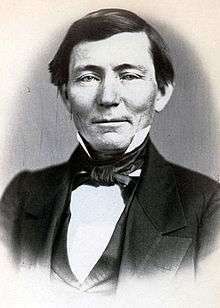 Samuel A. Smith Samuel A. Smith |
March 4, 1853 – March 3, 1859 |
Democratic | |
| Reese B. Brabson | March 4, 1859 – March 3, 1861 |
Opposition | |
| Vacant | March 4, 1861 – February 25, 1863 |
George W. Bridges elected but unable to take seat after being taken prisoner by the Confederate Army | |
| George W. Bridges | February 25, 1863 – March 3, 1863 |
Unionist | Seated February 25, 1863 after escaping Confederate prison |
| Vacant | March 3, 1863 – July 24, 1866 |
American Civil War | |
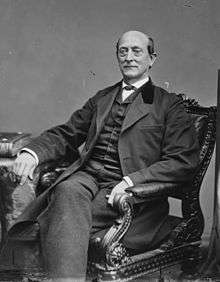 William B. Stokes William B. Stokes |
July 24, 1866 – March 3, 1867 |
Unconditional Unionist | |
| March 4, 1867 – March 3, 1871 |
Republican | ||
| Abraham E. Garrett | March 4, 1871 – March 3, 1873 |
Democratic | |
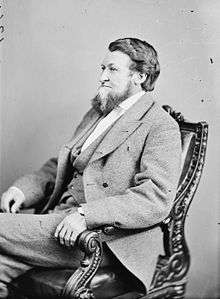 William Crutchfield William Crutchfield |
March 4, 1873 – March 3, 1875 |
Republican | |
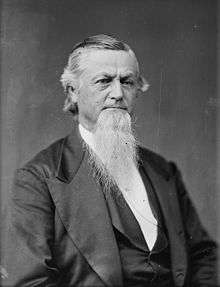 George G. Dibrell George G. Dibrell |
March 4, 1875 – March 3, 1885 |
Democratic | Retired |
| John R. Neal | March 4, 1885 – March 3, 1889 |
Democratic | |
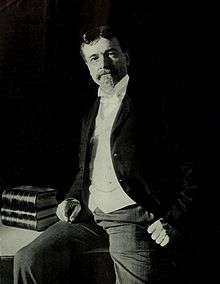 Henry Clay Evans Henry Clay Evans |
March 4, 1889 – March 3, 1891 |
Republican | |
| Henry C. Snodgrass | March 4, 1891 – March 3, 1895 |
Democratic | |
 Foster V. Brown Foster V. Brown |
March 4, 1895 – March 3, 1897 |
Republican | |
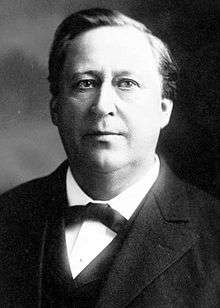 John A. Moon John A. Moon |
March 4, 1897 – March 3, 1921 |
Democratic | |
 Joseph E. Brown Joseph E. Brown |
March 4, 1921 – March 3, 1923 |
Republican | |
| Sam D. McReynolds | March 4, 1923 – July 11, 1939 |
Democratic | Died |
| Vacant | July 11, 1939 – September 13, 1939 | ||
.jpg) Estes Kefauver Estes Kefauver |
September 13, 1939 – January 3, 1949 |
Democratic | |
| James B. Frazier, Jr. | January 3, 1949 – January 3, 1963 |
Democratic | |
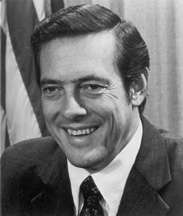 Bill Brock Bill Brock |
January 3, 1963 – January 3, 1971 |
Republican | |
 LaMar Baker LaMar Baker |
January 3, 1971 – January 3, 1975 |
Republican | |
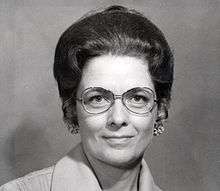 Marilyn Lloyd Marilyn Lloyd |
January 3, 1975 – January 3, 1995 |
Democratic | |
 Zach Wamp Zach Wamp |
January 3, 1995 – January 3, 2011 |
Republican | |
 Chuck Fleischmann Chuck Fleischmann |
January 3, 2011 – Present |
Republican | |
Historical district boundaries
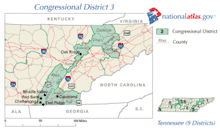
See also
References
- ↑ "Partisan Voting Index – Districts of the 115th Congress" (PDF). The Cook Political Report. April 7, 2017. Retrieved April 7, 2017.
- ↑ https://github.com/JeffreyBLewis/congressional-district-boundaries
- ↑ Republican Primary Unofficial Results, Tennessee Election Commission website, accessed August 6, 2010
- ↑ Larry Henry, Fleischmann beats Smith in 3rd District, Chattanooga Times Free Press, August 6, 2010
- ↑ 3rd District hopefuls tout finances, AllBusiness.com website, attributed to Chattanooga Times Free Press, October 17, 2009
- ↑ Tom Humphrey, Congressional candidate money notes, Humphrey on the Hill, Knoxville News Sentinel website, October 15, 2009
- ↑ Joe Lance, What Kind of Democrat Will Win the Third District Primary?, September 28, 2009
- ↑ Democratic Primary Unofficial Results, Tennessee Election Commission website, accessed August 6, 2010
- ↑ Official List of 2010 Candidates, Tennessee Department of State - Division of Elections, May 7, 2010
- ↑ 2010 Congressional Election Results: Tennessee District 3, Washington Post, accessed December 9, 2010
- Martis, Kenneth C. (1989). The Historical Atlas of Political Parties in the United States Congress. New York: Macmillan Publishing Company.
- Martis, Kenneth C. (1982). The Historical Atlas of United States Congressional Districts. New York: Macmillan Publishing Company.
- Congressional Biographical Directory of the United States 1774–present
- Political Graveyard database of Tennessee congressmen
Coordinates: 35°45′42″N 84°30′34″W / 35.76167°N 84.50944°W
.tif.png)